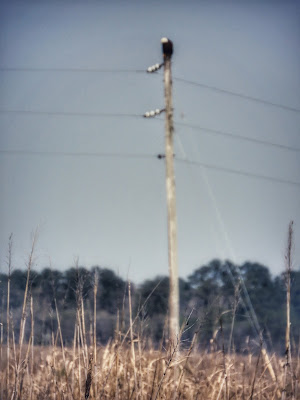My Spring Break from school has been a busy one but I was determined to take one day for an excursion to the Lowcountry’s ACE Basin. This is the land of vast nature preserves, a protected watershed region totalling some 1.6 million acres.
On Wednesday I drove south the 60 miles or so to the Bear Island Wildlife Management Area. As this site claims (accurately!) Bear Island is a birdwatcher's paradise.
Here can be explored the 18th and 19th-century rice fields that brought wealth to plantation owners and enslavement to Africans brought (and bought) to toil in swampy waterways like this one.
Wooden trunks like these continue to be used to control water levels in the former rice fields of the ACE Basin whose name comes from the confluence of the Ashepoo, Combahee and Edisto Rivers.
Two other wonderlands in this area, similar in layout to Bear Island, are the Donnelley WMA and the Ernest Hollings National Wildlife Refuge.
My blog documents numerous visits to these great places. See the above links and/or go to search this blog space in the column on the right.
During this Bear Island outing, I explored some outer fringes for the first time. The dirt road behind Mary’s House Pond just inside the preserve took me to Pinkney Break.
I parked at some point (cars are not allowed in many places) and walked until I came to the South Edisto River.
The weather was ideal with lots of sunshine and temperatures in the low 70s. Bugs, which can be a nightmare later in the spring and summer, were not too troublesome. To be safe, I carried repellent in my pocket whenever away from the car.
The very back of the reserve is always a good place to explore. Last Day Trunk offers long walking trails going in different directions, all adjoining the old rice fields.
WARNING: Alligators of all shapes and sizes live here too. The good news is that gators are as afraid of people as much as we are of them. But still, caution must be taken while walking near the waters. Keep your ears and eyes open for these critters. Keep your distance from them, and they’ll do the same.
If you see little baby gators, they may look cute but their mama may be nearby so be especially careful!
Now let’s get into the birds I saw and photographed. Bald Eagles, the national bird of the United States, were the highlight for sure!
I spotted one flying overhead early in my visit.
It’s never easy, for me anyway, to get a bead on a bird in flight. It’s harder to see through the camera lens than you might think. Maybe I need a better camera and better eyesight as well.
Regardless, I was pleased to get these images.
I was excited too when in the Last Day Trunk area a Bald Eagle flew over and then landed on a utility pole.
More photos to follow!
Here’s the shot that shows the setting. I wish I had checked the focus and tried to take a few sharper images. But that glorious American Bald Eagle stayed on that pole for several minutes, allowing me to take all the pictures I wanted.
I’m very familiar with American Coots, having seen them on the water in many places in the South Carolina Lowcountry.
But I’ve never seen so many together in one place.
I had also not noticed before the red spot at the top of the bill almost between the eyes. It kind of looks like a third eye.
Coots have different collective names. One is rafts and another is covers. A third is commotion. This because when gathered they are often very noisy, causing quite a commotion. But this group was quiet perhaps because of the Bald Eagle that was flying around nearby (see my earlier eagle photographs).
One of my favorite images from the day! You see why Yellow-rumped Warblers are affectionately called butter butts.
I have been seeing these Warblers a lot in my backyard lately. I guess I was a little surprised to see some in this remote and rugged wilderness.
The Northern Mockingbird is another wide-ranging bird.
Red-winged Blackbirds are a common sight here in the ACE Basin.
Great Blue Herons do have a great deal of wingspan!
Lots of Boat-tailed Grackles around the property today.
Forster’s Tern taking its turn on this platform.
My bird ID app says these are Hooded Mergansers. No males in the group. They stand out for the big white spots on their heads. See my photos in this post.
These small ducks are called Hoodies for short. They are migratory fowls that fly south for the winter from Canada and beyond.
This is an aside but not far from the Bear Island entrance I noticed this pair of what I believe were grain storage structures.
I stopped and took a few photos. This is just off Bennett Points Road on the left a couple miles before the Bear Island turn.
In that same vicinity, across a field, is this grand tree. I don’t know the type of tree (do you?) but I think it is really beautiful.







































No comments:
Post a Comment